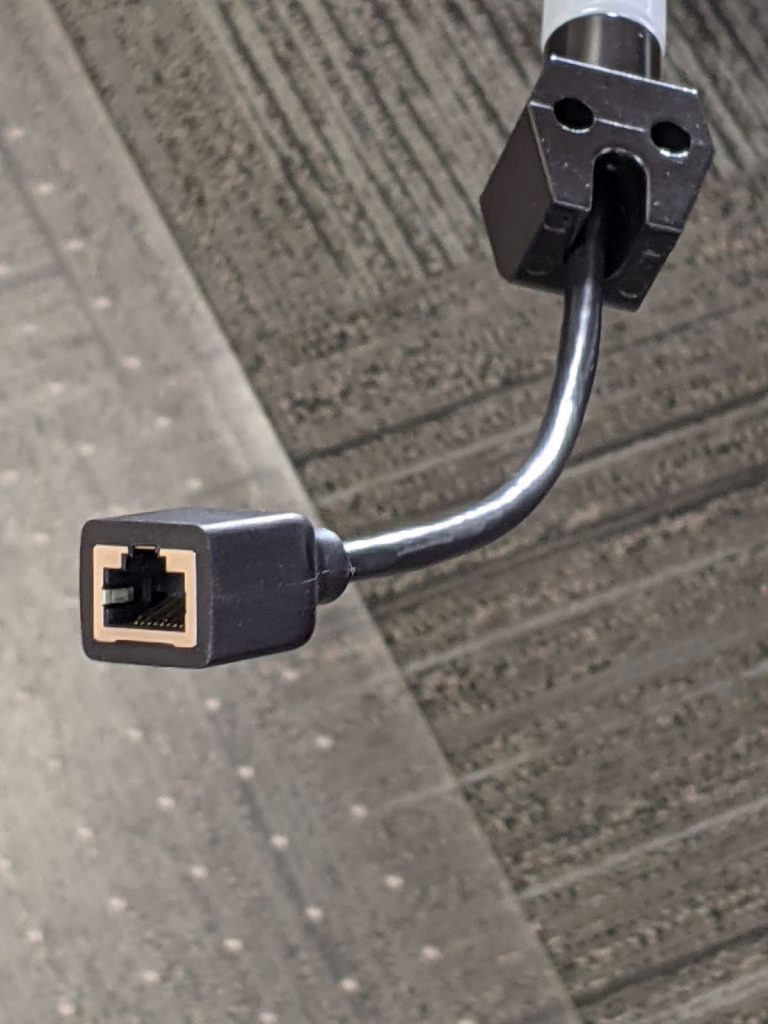Cable Management for Flex Arm medical devices
Share:
Here’s how we help create a clean, polished look for your medical device

.
Cable management is ubiquitous to most of our products these days. Why? Most medical devices that use flex arms have an electrical or technilogical component to them. That means wires, cords, and cables. If you have loose or dangling wires, it can be really frustrating or even dangerous to your medical device. It can even cause damage to the device itself. If those aren’t protected, sometimes you’ll see external fastenings like cable ties or even Velcro — but if you have a medical device that’s pretty difficult to clean. If the wire is wrapped around the device, it just doesn’t look good.
Products like The JustLight Sunflower need to know that their device will be able to stay clean and protected throughout the lifetime of the product.
How we allow for cable management in flex arm medical devices
Cable management or protecting the wires inside your mounting solution is a huge part of the design process. We, at Moffatt, treat it just as importantly as anything else, like color or the mounting base, um, you really need to think about how are we gonna protect those wires.
Let’s go back to basics. We’re going to use our task light that we’ve been selling for a long time — since the 1950s. Everybody recognizes a desk lamp. This product was designed with an offset coupler at the base with a little quick disconnect sleeve. Inspired by air hoses, it allows for quick disconnects to our products.
Utilizing an offset coupler base with a quick disconnect sleeve
The ease of use for this is easy to see (click the video!) You can simply pull up on that sleeve and take it with you to another area where it’s needed — just by pulling up on that sleeve. You can set it back down and snap it into place to allow it to rotate. It provides a nice swiveling motion at the bottom end. And with the swivel stop that we’ve designed into the lamp shade, you can also aim that light up down any direction that you need to.
It provides a lot of motion, but this wouldn’t work very well with that wire going straight through the arm. If it didn’t have a swivel stop. So this swivel bearing allows for one and a half turns before it’s gonna prevent any further rotation or damage to that wire. In this design that offset coupler is needed so that the wire can actually exit the arm because the coupler itself needs to go onto that mounting stud.
Swivel bearings for mounting bases
But we’ve recently started using this swivel bearing as a mounting base. There are a few different designs, but looking at this example, we can see that you’ll still use the same parts essentially. The good news? this allows for one and a half turns of rotation, while still protecting those cables and allowing cords to pass straight through. This also hides the wires entirely.
So these techniques can create a really clean, finished look in any application or medical device. And we’re beginning to use these all over the place: in medical environments, clinical environments. Providing patient care. These are places where good cable management is really important. It needs to be an easy experience for the user and free of distractions. Most medical technology requires some kind of a charging or data cable and if you have loose or dangling wires, it can be really frustrating or even dangerous or cause damage to the device itself.
If those aren’t protected, sometimes you’ll see external, um, fastening like cable ties or even Velcro, but that’s pretty difficult to clean. Um, and if the wire is wrapped around the device, it just doesn’t look good.
So anytime that we can, as long as we can fit wire itself or the connectors through the inside, of the flex arm. We really like to go that route. It just creates a nice clean finished look, for your cable management.
We’ve developed these methods since our very first Moffatt Lamp back in the 1950s. Since then, we’ve worked with countless folks to help them realize their design. Are you ready to start?
